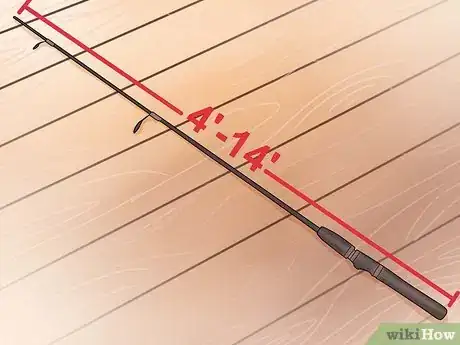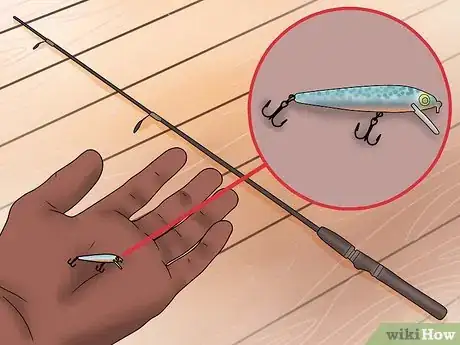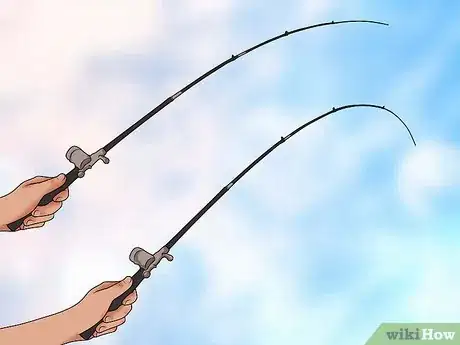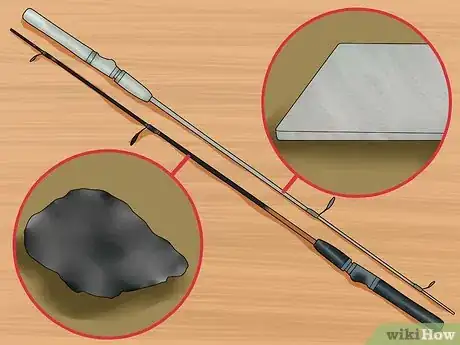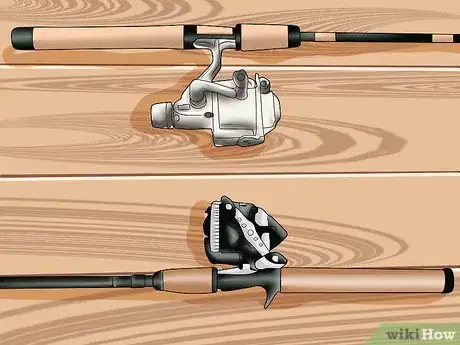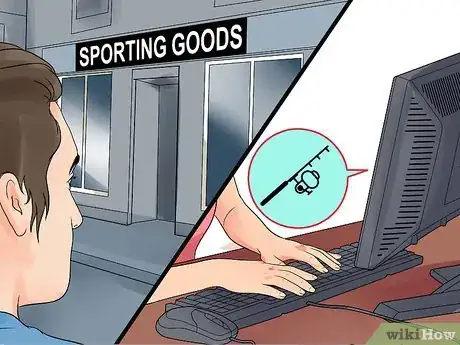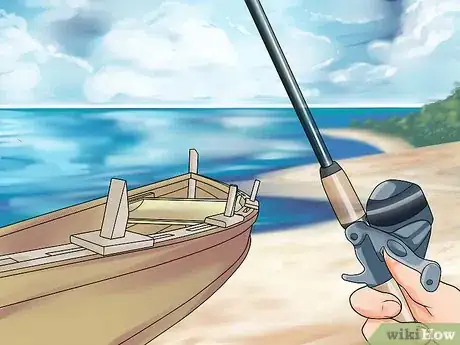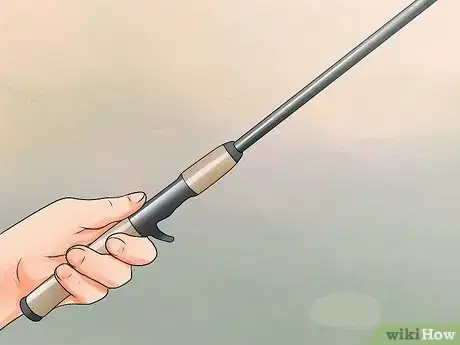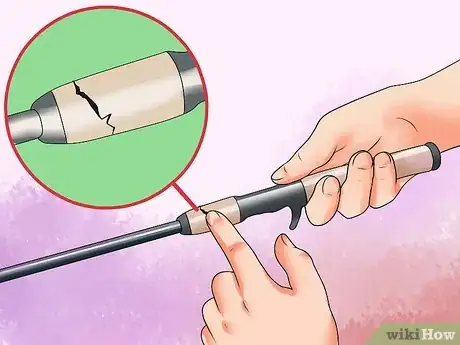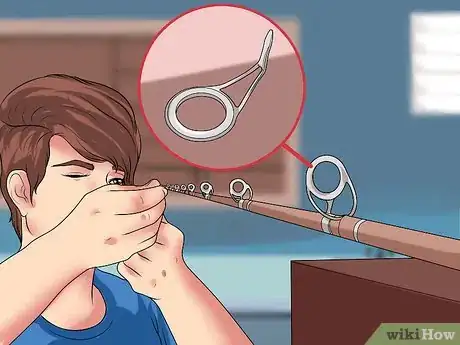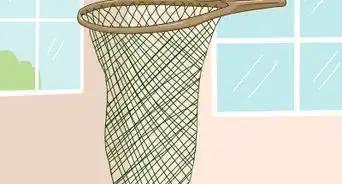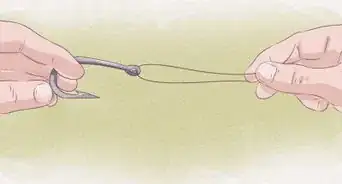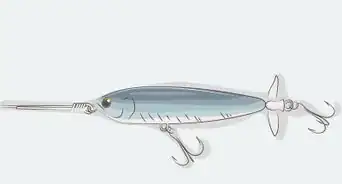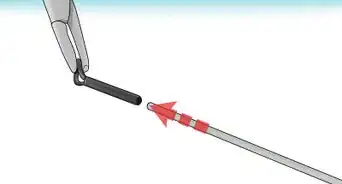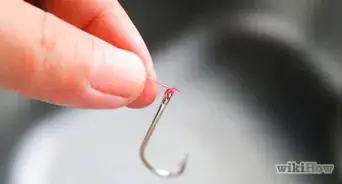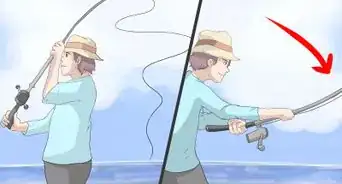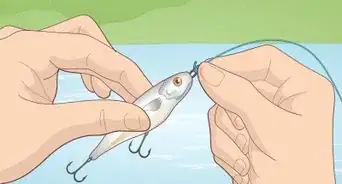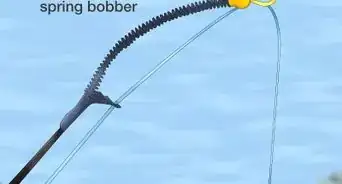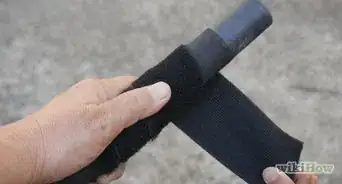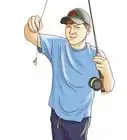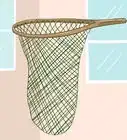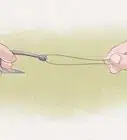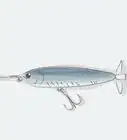wikiHow is a “wiki,” similar to Wikipedia, which means that many of our articles are co-written by multiple authors. To create this article, 19 people, some anonymous, worked to edit and improve it over time.
wikiHow marks an article as reader-approved once it receives enough positive feedback. In this case, several readers have written to tell us that this article was helpful to them, earning it our reader-approved status.
This article has been viewed 160,824 times.
Learn more...
Choosing a fishing rod may seem overwhelming, but selecting the right rod is no different from finding the right pair of shoes. [1] Depending on what kind of fishing you will be doing, there are many parameters to help guide you towards the right fishing rod for your lifestyle. Ultimately, fishing rods come in so many models and styles because each is designed for a different kind of fisherman. Figure out what fishing rod is best for you based on your specific needs, and you will be on your way to making a quality purchase.
Steps
Understanding Fishing Rod Measurements and Specifications
-
1Choose a length. The length of a rod is measured from the tip all the way to the end of the butt. Fishing rods range in length from about four feet all the way up to fourteen feet. [2] Larger rods often dissemble into several pieces for easier transportation. Depending on where you will be fishing and what you will be fishing for, you will need to choose a rod length.
- Shorter rods cast shorter distances and are usually used for lightweight lures. [3] They also allow you better manipulation when you are fighting with a fish, so may be appropriate for big game fishing. They are also useful when trolling, a type of fishing where the line is attached to a moving boat and drawn across the water. [4]
- Longer rods cast further distances and, therefore, are useful for surfcasting, which is when you are fishing directly from the shoreline rather than a boat or pier. Longer rods are also used in fly fishing and for heavier lures. [5]
-
2Decide on a weight. The weight of a rod tells you how much weight it can carry, and therefore how strong it is. Depending on what lures or bait you will be using, you will need a specific strength rod. [6]
- The weight is measured either by the weight of the lure it is designed to cast, or the "pound test". The pound test is the fishing line weight it is designed to handle. [7]
Advertisement -
3Understand the action. The action of a rod is the point on the rod where it bends. This measurement can range from "ultra light" to "heavy". A heavy action means it bends closer to the tip while a lighter action bends closer to the butt of the rod. [8]
- A heavier action means a stiffer backbone on the rod.This means it is recommended for use with bass or other large species of fish. [9] A lighter action rod is usually used with smaller species of fish.
-
4Decide on a material. Fishing rods are made of graphite, fiberglass, or a combination of both materials. The material that your rod is made of is related to its functionality and the kind of fishing that you will be doing.
- Graphite rods are lighter and stiffer, but much more brittle than fiberglass rods. They are much more sensitive, as well, because of this. [10] Graphite rods are usually more expensive than fiberglass rods. [11]
- Fiberglass rods are heavier, but much more flexible than graphite rods. They are very difficult to break. [12] They are also usually the less expensive option when choosing a rod material.
- A combination of both materials is ideal for a fisherman who fishes in a variety of locations, for multiple types of fish.
-
5Choose a reel. Rods are also determined by what kind of reel you will be using. [13] Reels are either spinning or casting. The different kinds of reels correspond to a fisherman's different needs.
- A spinning reel is like automatic transmission on a car. It allows less control but is ideal for beginners because it allows for a greater rate of success. Spinning reels are less likely to get tangled. [14] They work well with lighter lures and baits and are good all-purpose rods. [15]
- A casting reel is similar to a manual transmission on a car. It allows more control as you use your thumbs to control the accuracy of the cast. This, however, makes it more difficult to use. [16] They are also used more often with heavier artificial lures.
Shopping for a Rod That Fits Your Needs
-
1Choose where to buy your rod. Where you buy your rod will greatly determine the quality and value you get for your rod. While it is tempting to shop for the best deal, make sure you are visiting a specialty sporting goods store where they will have a wide selection of fishing rods. A smaller store will allow you to have a greater rapport with a salesperson or specialist if you have questions.
- Be careful of buying your rod online. Unless you have tried it out in the store first, it will be difficult to find the best fishing rod for you by shopping online. You will be unable to feel the rod in your hand or examine the quality if you have only viewed it online.
- Don't be afraid of asking for help. If you visit a quality sporting goods store, the salespeople will likely have experience with the products. They can help you find the perfect fit if you explain your needs and desired specifications.
-
2Determine what level fisherman you are. If you are a beginner and planning of fishing less frequently, consider buying a less expensive rod. [17] If you are more seasoned, consider investing in something that will last longer.
- Spinning rods are also ideal for beginners, as they are easier to use than casting rods.
-
3Determine where you will be fishing. If you are traveling to fish, it may be wise to buy a fishing rod that breaks down into several pieces. If you have a boat or will be fishing nearby, you may only need to purchase a rod that remains in one piece. [18]
-
4Decide what kind of bait you will be using. In fishing, you are either using live bait, referred to as casting, or lures. A casting fisherman may want a more sensitive rod in order to be able to feel each small movement in the water. A lure fisherman may prefer a stiffer rod to be able to manipulate the rod and imitate the movement of the prey. [19] Decide which technique you would like to use when choosing a rod.
Determining the Quality of Your Fishing Rod
-
1Hold the rod in your hand. Comfort is an important factor when choosing a fishing rod and a rod may feel different in different people's hands.
-
2Check for defects. Look for any cracks or poor workmanship in the rod. Defects may make it more likely for the rod to break in the future. If the rod breaks down into more than one piece, attach the pieces in the store and make sure they attach securely with no wiggle room.
-
3Check the guides. The guides are the loops that attach the line to the rod. They may be made of any kind of metal or ceramic. The more guides there are the better quality the rod, as the line is more controlled by the rod.
- Hold the rod at eye level and look down the length of the rod from the tip to the butt to make sure the guides line up properly.
Community Q&A
-
QuestionWhat is the difference between a spinning rod and a casting rod?
 Community AnswerSpinning rods are typically designed for more amateur fisherman, for lighter gear, and to cast out farther if you're a shore fisherman. Bait casters allow more control over where you cast, and are suitable for heavier gear. Most casting rods are more expensive, and have a grip on the lower back of the rod, as the reel faces upwards rather then downwards like on a spinning rod. This will make it uncomfortable to hold the rod if you use a spinning reel on a casting rod. You can use a bait casting reel on either a spinning or casting rod, but casting rods are better balanced for bait casting reels than spinning rods are.
Community AnswerSpinning rods are typically designed for more amateur fisherman, for lighter gear, and to cast out farther if you're a shore fisherman. Bait casters allow more control over where you cast, and are suitable for heavier gear. Most casting rods are more expensive, and have a grip on the lower back of the rod, as the reel faces upwards rather then downwards like on a spinning rod. This will make it uncomfortable to hold the rod if you use a spinning reel on a casting rod. You can use a bait casting reel on either a spinning or casting rod, but casting rods are better balanced for bait casting reels than spinning rods are.
References
- ↑ http://www.tackletour.com/reviewrightrod.html
- ↑ https://www.youtube.com/watch?v=Hv6ZvPozwxk
- ↑ https://www.youtube.com/watch?v=Hv6ZvPozwxk
- ↑ http://takemefishing.org/fishing/fishopedia/bait-and-equipment/how-to-choose-a-fishing-rod/
- ↑ http://takemefishing.org/fishing/fishopedia/bait-and-equipment/how-to-choose-a-fishing-rod/
- ↑ http://takemefishing.org/fishing/fishopedia/bait-and-equipment/how-to-choose-a-fishing-rod/
- ↑ http://takemefishing.org/fishing/fishopedia/bait-and-equipment/how-to-choose-a-fishing-rod/
- ↑ https://www.youtube.com/watch?v=Hv6ZvPozwxk
- ↑ https://www.youtube.com/watch?v=Hv6ZvPozwxk
- ↑ http://thewirecutter.com/reviews/best-rod-reel-for-most-fishers/
- ↑ http://takemefishing.org/fishing/fishopedia/bait-and-equipment/how-to-choose-a-fishing-rod/
- ↑ http://thewirecutter.com/reviews/best-rod-reel-for-most-fishers/
- ↑ http://www.tackletour.com/reviewrightrod.html
- ↑ http://thewirecutter.com/reviews/best-rod-reel-for-most-fishers/
- ↑ http://takemefishing.org/fishing/fishopedia/bait-and-equipment/how-to-choose-a-fishing-rod/
- ↑ http://thewirecutter.com/reviews/best-rod-reel-for-most-fishers/
- ↑ http://www.tackletour.com/reviewrightrod.html
- ↑ http://www.tackletour.com/reviewrightrod.html
- ↑ http://thewirecutter.com/reviews/best-rod-reel-for-most-fishers/
About This Article
When you’re choosing a fishing rod, consider the type of fish you’ll be trying to catch, along with the environment where you’ll be fishing. For instance, a shorter rod is usually used for lightweight lures, but it also allows you better movement, making it good for big game fish. Longer rods cast further distances and are ideal for fishing from a shoreline or for fly fishing. Choose a rod with a lighter action, meaning it bends closer to the butt of the rod, for smaller fish, or a heavier action, bending near the tip of the rod, for bass and other large fish. Keep reading to learn about the materials that most fishing rods are made from!
